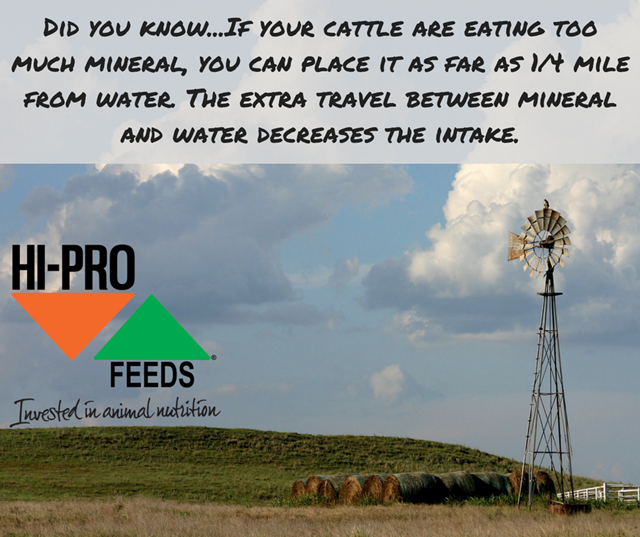The answer to his question has many aspects to it. Cattle do have some level of what is referred to as “nutritional wisdom” in that when they have a nutrient deficiency, they will seek out sources of food that may have higher levels of the deficiency nutrient, or nutrients, than other sources. Humans have this, too, and it is called “cravings”. We get an urge for peanut butter, a banana, steak, ice cream, etc. We generally don’t think of this as nutritional, but that is where the base drive for these craving originate. However, cattle are no better than we are about eating what is “good for us” and will tend to eat what tastes better to them.
In cattle, we see this many times as the reason for animals eating toxic plants that are green in the winter when most of the preferred forages are dormant and low in nutrient values. The cattle will generally avoid these potentially toxic plants, but when there is no other source, such as supplements, to help with the nutrient deficiencies, the cattle are driven by their nutrient demands to eat the toxic plants.
In the case of mineral supplements, this concept is behind what nutritionists use to develop mineral supplements that will hopefully cover a range of potential nutrient deficiencies for livestock. Cattle will have, and try to correct, a phosphorous deficiency more than many of the other mineral nutrients. Nutritionists combine nutrients like magnesium, which is very necessary but does not taste too well to cattle, as well as trace minerals (essential for many body functions, but don’t seem to drive the “cravings” as well as phosphorous) in hopes of correcting a broad range of these mineral deficiencies as the cattle try to correct their phosphorous deficiency.
To help with consistent consumption, all manufacturers of mineral supplements put some ingredients, such as molasses, cottonseed meal, distillers grains, etc. in the mineral supplement to override the taste of ingredients like magnesium, phosphorous, and others so that the cattle will eat more consistently and not be building the nutrient deficiencies to the level of cravings. This can drive higher consumption levels in the dormant forage season, especially if forage nutrient values are lower than normal and the current supplementation is not quite correcting their protein, energy, and mineral deficiencies from the pasture. Also, and this year is an example, we can have years when phosphorous, and other mineral nutrients, a good bit lower than we normally see. That has been the case on many ranches this winter, and it forces the cattle to eat much more than they normally do in order to try to correct their phosphorous deficiency.
When cattle seem to be “overeating” mineral supplements, I suggest moving the supplement farther away from water, 300 to 400 yards at first. If the cattle are eating it just because their a bit deficient in something and they like the taste of the supplement, this should slow them down a good bit. If they continue eating as much as when the supplement was closer to water, then put a source of granular salt in the same area as the mineral supplement, but in a separate tub. Cattle can build a sodium deficiency and water imbalance and the salt that’s in a mineral supplement will generally not correct it. If this is the case, the cattle will eat salt very heavily for a few weeks and then taper off. When they taper off, pull the salt from the area. If the consumption of the mineral supplement is still high, then salt is not the problem. If neither of these work, then the mineral levels of the forage they are eating is probably lower than normal and they may have been eating what they need to correct their deficiencies all along. If this is the case, for their health and production, you should accept the higher mineral supplement consumption until the forage conditions improve with spring and summer growth. Depriving them of correcting their mineral deficiencies at this time can influence how well they breed back, the growth and development of calves both in the uterus and after calving, and the health of the calves as they grow.
Got a question? Ask our experts! Message us on Facebook.
Interested in our products? Click here.


